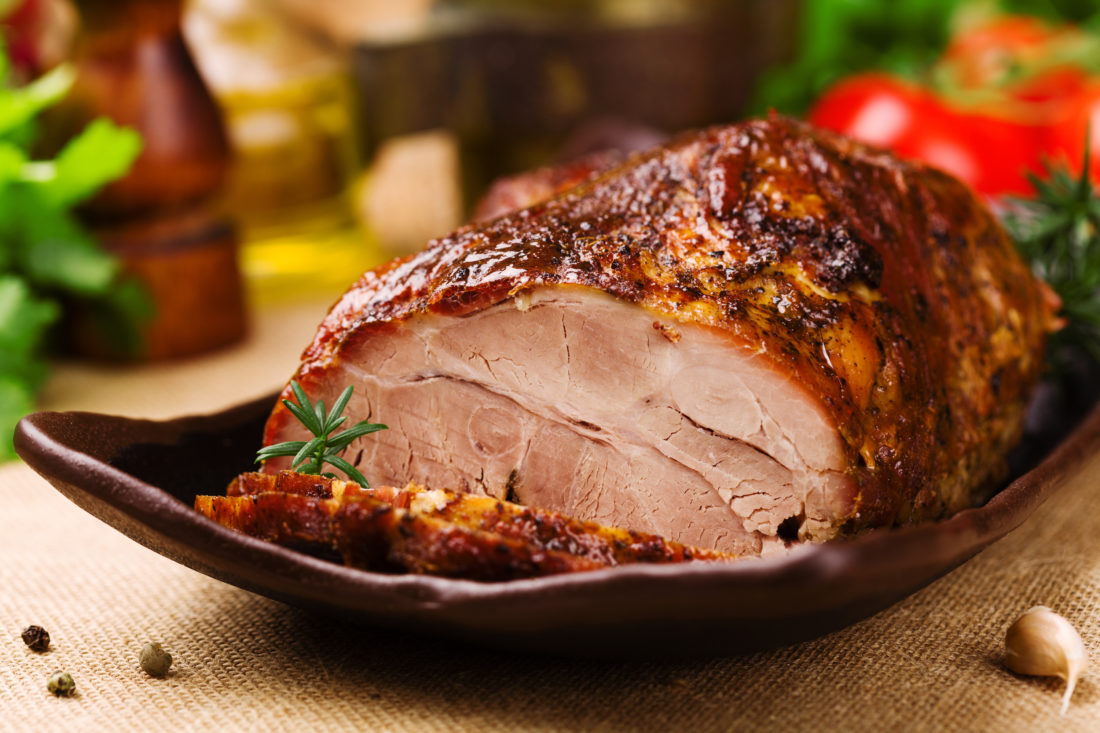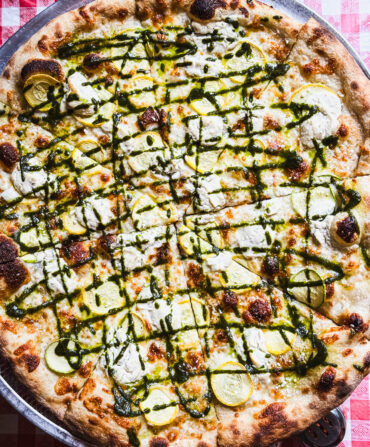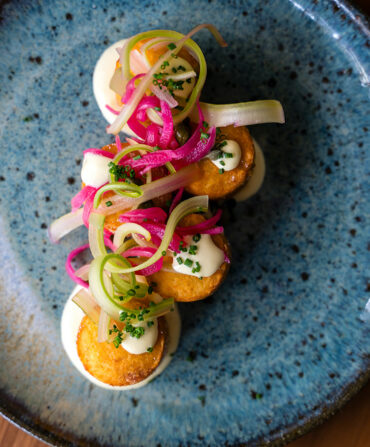What say we disassemble the widely held fear of roasting a fresh ham for Easter? There’s no Escoffier, no Julia Child, no Cook’s Bible that says a fresh ham has to be an object of terror. Roasting one is just about burnishing some old-school meat skills.
I rather backed into my love of fresh hams some years ago on a dare to cook one from my butcher, as though we were in the hall between classes in high school, and he thought it would be funny if I asked the head cheerleader for a date just so he could watch her shoot me down.
It was coming on Easter, and I surprised him, and myself a bit, by buying the ham off him on the spot. I think he had an extra one lying around in his walk-in because somebody lost courage at the last moment. Bone in, skin on, it topped the scale at sixteen pounds.
Not a soul in my house, except for me, was happy with this extremely large and officially “difficult” piece of meat I heaved into the refrigerator. After I read up and roasted the thing, they changed their minds. It was just too good and too damned honest.
As we know, most hams are brined, salted, or otherwise cured, then baked and made ready to pop into the oven. Poof, instant Easter! Congratulations on warming up somebody else’s factory cooking for your family. Slice of pineapple on top of that, anybody?
In strict receipt vocabulary, what follows is about dealing with a ham that is not cured, salted, brined, smoked, boiled, or baked before you touch the meat. I should add that I’m not a dead-eye purist; I will eat just about any ham and gladly have. But the Easter ham is the jolliest of the year, and I think it’s worth a little extra effort. In fact, it’s not work so much as it’s a bit of fun with chemistry and the noble pig. Along the way, you are, also, removing what you can of the industry from your Easter table. You, your knives, your oven, and your spice rack become the craft. Your Easter dinner will be as homemade as it is going to get, short of setting up a pig pen out back.
There are four main phases to this receipt, and as you’ll see, they aren’t set in stone. Funny thing to say about a ham, but feel free to improvise, especially with regard to spices.
The Butcher
You start demystifying the process of getting a fresh ham at the butcher. One main kitchen-Zen fact to remember: You’re essentially buying a pork roast. It’s not “red” from the nitrates, it’s pink-beige, the way you like to see your pork roasts, loins, and chops. That’s all you’re doing here. You’re just getting something big, from a different part of the pig.
Depending on your crowd, go for something around thirteen to sixteen pounds, bone in. You want the shank. And you want the skin on, because: cracklings. As your guests ooh-and-ahh over the amazing succulence you have delivered to them, there will also be a highly amusing fight over the cracklings at the table.
The fight over the cracklings won’t be the heart-healthiest thing you’ve ever staged out of your kitchen, but hey, this is Easter. The rebirth of your arteries is, with judicious post-Easter exercise and the non-consumption of cracklings, just around the corner.
The Rub
Some folks will brine a fresh ham, and if you like that notion, go for it. I prefer a rub, as I would do for a pork loin. This is the point at which you can become the craft-curer of your own ham. Which is not scary, either, since all it takes are some spices, your refrigerator, and a day or two of time before you do your roast.
Get: a pound of kosher salt; a box of dark brown sugar; bunches of thyme and rosemary; green, black, and/or red peppercorns, ground; and a few whole cloves. Roughly speaking, a pound of cure will cure ten pounds of ham. But this isn’t a cure that will be on the ham for six months, so, bottom line, you can use less than the professional curers do. Start with a cup of salt and a half-cup of brown sugar. If your ham is of a size that needs more, make it, but that should do for a start. For a fifteen-pound fresh ham, you’ll want about a pound to a pound-and-a-half of cure.
Mix copious amounts of the spices, chopped, with the salt and sugar. You almost cannot over-spice with herbs, because you won’t be cooking with these elements. They’re there to infuse, as with any rub. The spices will have done their work on the meat at cooking time, so you’ll be scrubbing the cure off before you roast.
Lay out some unwaxed butcher paper on the counter so that you can avoid cure spillage—some of it will stick, some of it won’t. Score the skin in the classic diagonal fashion, being careful not to cut into the meat. Stuff the cure mixture into the scored skin and under the edges of the skin at the shank and at the butt, and then do what you can to pack the cure atop the skin around the ham. Under the skin at the shank, cut a “pocket” from two to four inches in alongside the bone and stuff that with the cure as well—all you’re doing here is putting a bit of spice in a position to walk its way up along the bone.
Wrap well—best is what the smokers would call a ham sock, but any old kind of kitchen muslin or even multiple layers of butcher paper wrapped tightly and tied, then bagged in paper, will do in a pinch. Store in your refrigerator anywhere from overnight to two days. Twelve hours before roasting does fine. The spices will have done their work, so remember before you roast to scrape off the rub and empty the pocket of whatever’s left in it. You don’t want those strong salted flavors in play anymore. Instead, you want the more complex flavors of the basting and the glaze to govern what happens to the ham as you roast it.
The Roast Itself
It’s fresh, right? So, you’re roasting, not “baking,” this ham. Preheat to 450 to 500°F, roast for twenty minutes to get it started, then pull down to 300 to 325°F and cook for twenty minutes per pound. Baste often with the pan juices. If you like a glaze, make one now, and glaze with a tablespoon every thirty minutes. In making your glaze, drop a little Weller or whatever good Southern tipple you have around. The most crowd-pleasing glazes are bourbon-laced.
The Pan Juices
With the roasting done, deglaze your roasting pan to create a basic jus. Now for the fun chemistry-set work: Over the years I’ve tried a lot of adds to this base, but lately I like a twist from the Atlanta, Georgia, chef Kevin Gillespie I once read about. He makes a roasted-ham jus with what amounts to a fresh applesauce folded in. You will need to add some ham stock to your deglazed pan juice reduction to give your jus more volume, so make both this applesauce and that ham stock in advance, not least, to save time during this mad dash to the carve-and-serve moment. Gillespie specifies Fujis, but if those are not available, any old mix of Grannies, Idareds, Macs, Jonathans, et al., are splendid. Once you’ve cooked the apples as you would for an applesauce, drop them in the blender with your jus, heat it up on the stove, put it in a gravy boat, and you’re done.
Metaphorically, you’ve just garnished your fresh roast pig-leg with an apple. All you’re waiting for now is the applause.








